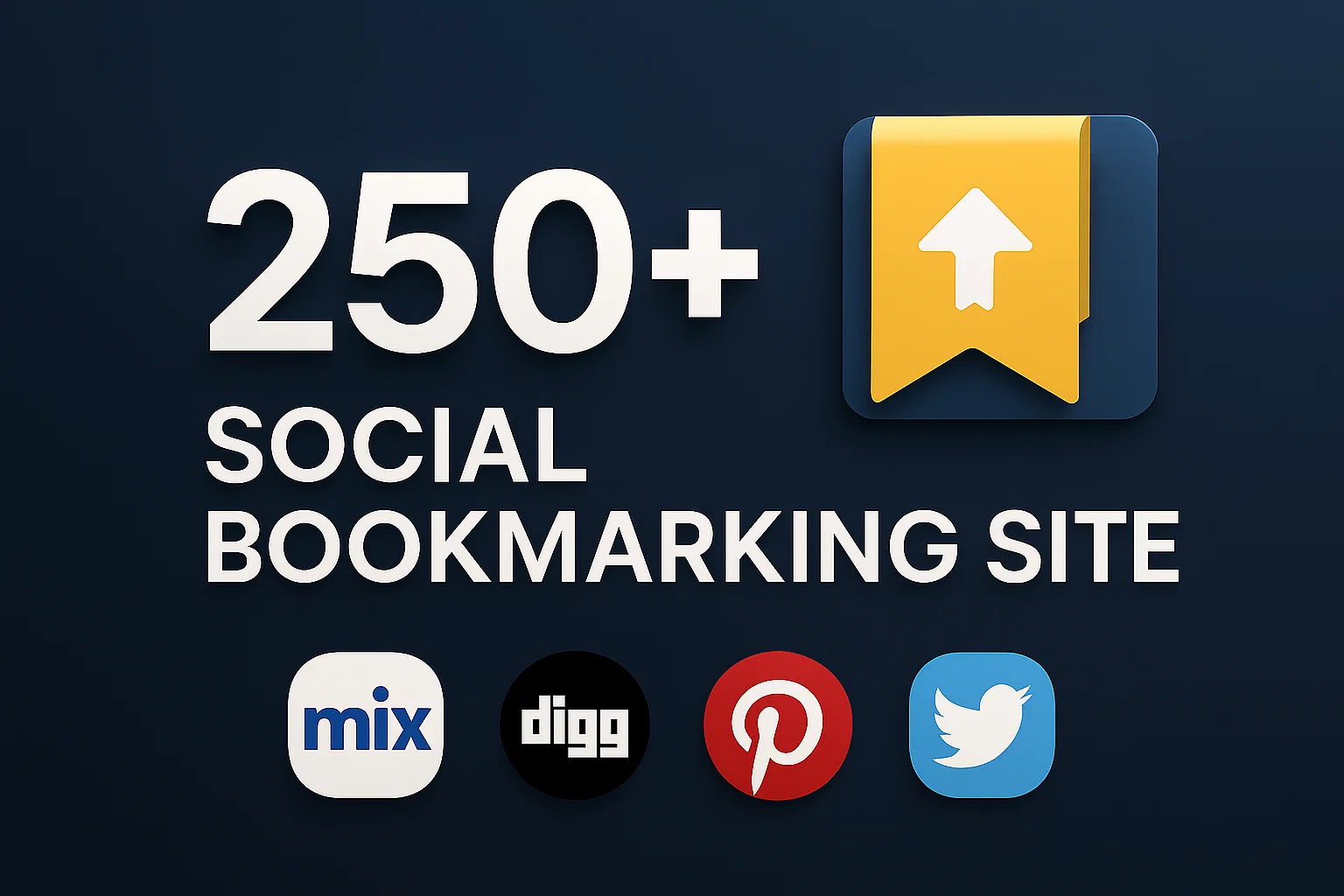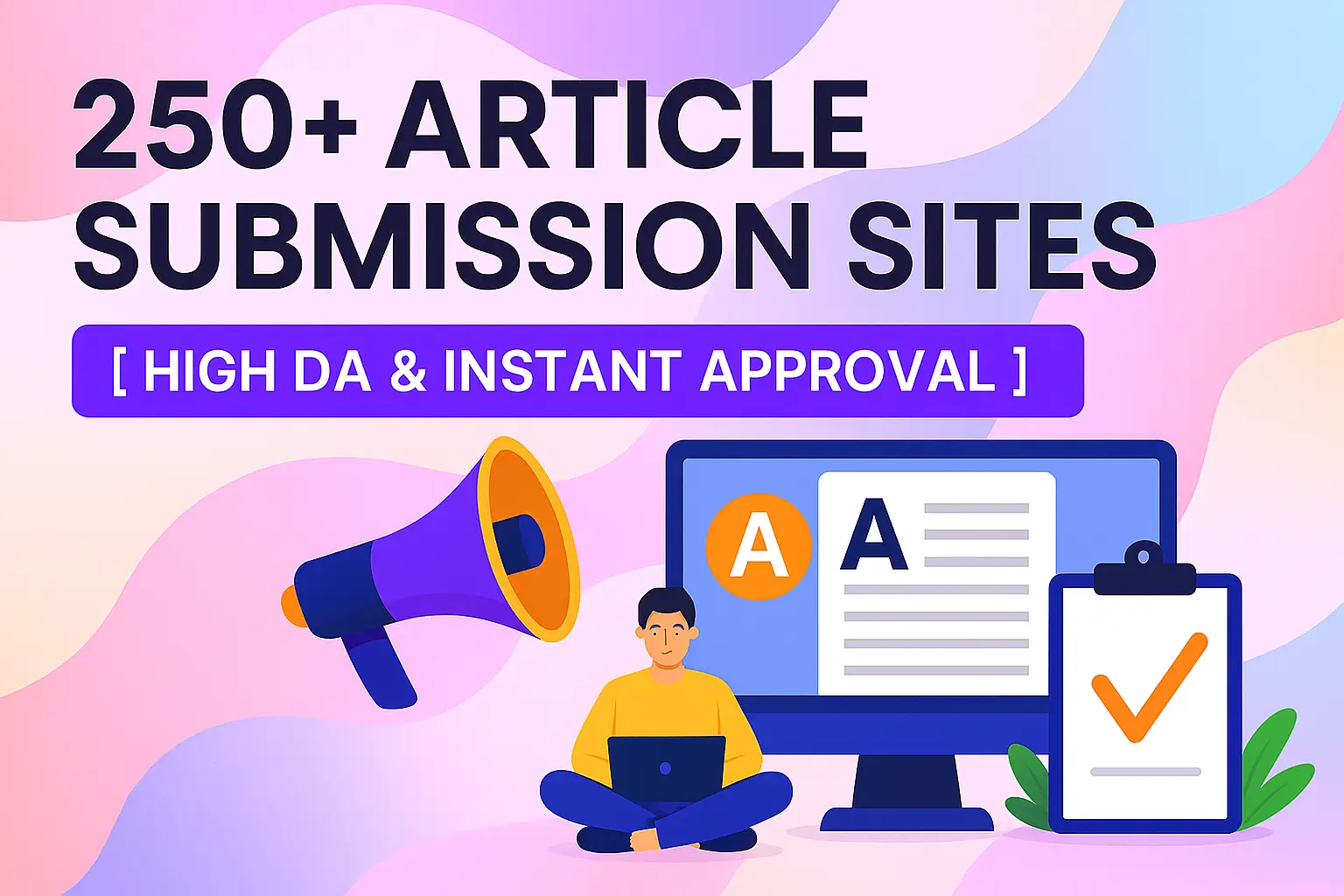Mastering SEO in 2025 isn’t just about keywords and backlinks. If you’re new to SEO, it can feel overwhelming with so much changing all the time. That’s why I’ve put together a complete step-by-step roadmap to guide you.
This roadmap includes all the important topics you need to learn SEO, For example how to do keyword research or how to utilize AI for becoming more productive. With helpful videos linked to most topics, so you won’t miss anything or waste time watching hundreds of clickbait & irrelevant videos. Plus, you’ll find a PDF below that covers everything from beginner to advanced SEO.
The PDF is organized into 12 easy-to-follow modules, and each module is broken down into smaller subtopics for better understanding. Whether you’re just starting or looking to improve, this guide will help you become confident in SEO.
Download my free PDF below to help you learn SEO skills for 2025 and build a strong foundation.
Please note, I’ve tried my best to include all the important topics an SEO learner should cover. Each topic is broken down into smaller subtopics that you need to learn to become a complete SEO expert.
If you just want the syllabus, you can download the PDF below. But if you’re a self-learner and want to track your progress, I’ll also share a sheet link that you can easily copy and use.
Now Let me break down the full set of modules that are essential in learning SEO.
Section 1: Working Of Search Engine
You should start by understanding the basics of how search engines work and how web pages are indexed. Once you’re clear on that, you can move on to learning about page structure and search engine guidelines.
Keep in mind, having some basic knowledge of programming—like HTML, CSS, and JavaScript—is a big plus. It will help you understand page structure better and will also give you an advantage when applying for SEO jobs.
- Search Engine Basics: This topic covers how crawlers scan web pages, How indexing works, and importance of a sitemap.
- Page structure & HTML Tags: You should learn about title tag hierarchies, the rules for meta tags, and how to format proper heading outlines.
- Content Quality and User Intent:You should learn how to create content that is relevant and matches user search intent. Once you understand these concepts, you can practice by drafting simple web pages.
Section 2: Keyword Research & Competitive Analysis
Keyword research is undoubtedly one of the most important topics in SEO. It forms the foundation of your entire SEO strategy. If you end up choosing the wrong keywords, your efforts can fail, and you won’t get the desired results.
To make this easier for you, I’ve also created a practical, well-researched video on keyword research. You can start with that to understand the basics clearly.
While learning keyword research, here are a few key things to focus on:
- Keyword Difficulty – Understand how hard it is to rank for a particular keyword.
- Region – Focus on location-specific searches for better targeting.
- Competitor Analysis – See what keywords your competitors are ranking for and analyze their content and backlink profiles.
- Long-Tail Keywords – Target low-competition, specific phrases with clear intent that are easier to rank for.
This topic also covers the following essential steps:
- Seed Term Generation: Start by creating a manual list of primary topics and common user questions. Expand this list using related terms from free keyword tools.
- Search Volume & Difficulty: Check how often a term is searched each month and evaluate its difficulty. Focus on keywords showing growth potential rather than chasing high-competition terms.
- Competitor Benchmarking: Identify top-ranking sites for each keyword. Analyze how long their content is, how many backlinks they have, and spot opportunities where you can compete.
- Long-Tail Targeting: Find specific phrases with lower traffic but clear user intent. Create valuable content to answer these queries and build targeted traffic over time.
I understand that keyword research can feel difficult when done manually, but it’s the best way to really learn and understand the concepts. Once you get comfortable with the basics, you should also explore tools like Ahrefs or SEMrush.
These tools can help you with keyword research and many other SEO tasks. However, they come with a monthly subscription, so if you’re just starting out, you can skip buying them for now.
Still, I recommend watching a few videos on how these tools work. It will give you a good idea of how professional keyword research is done.
Section 3: On-Page SEO Deep Dive

On-Page SEO is the next important step after keyword research.
If you’re a fresher, your first SEO task is often to optimize website pages. That’s why it’s crucial to learn how to do proper On-Page SEO.
Key Points to Focus on in On-Page SEO:
- Title & Meta Tags
- Write titles under 60 characters with main keywords at the start.
- Write meta descriptions under 160 characters.
- Avoid duplicate titles/descriptions and filler words.
- Heading Structure
- Use one H1 tag for the main topic.
- Use H2 tags for major sections.
- Use H3 tags for sub-points under H2.
- Follow a clear hierarchy for better readability.
- Content Formatting
- Break content into short paragraphs.
- Use bullet points to list similar ideas.
- Add call-out boxes for tips or key points.
- Keep sentences under 20 words for easy scanning.
- Internal Linking
- Add links to related articles or pages to guide users and improve site structure.
- Media Optimization
- Compress images to under 100 KB for faster loading. ( Quick note i use Ceasium image compressing my images. )
- Add descriptive alt text for each image (avoid keyword stuffing).
- Page Speed Optimization
- Test and improve loading speed using tools like Google PageSpeed Insights.
- Optimize code, reduce heavy scripts, and enable caching.
- Mobile Friendliness
- Ensure the page design is responsive and works well on mobile devices.
- Check readability, navigation, and load times on smartphones.
Learning about all these subtopics to build a strong foundation in On-Page SEO.
Section 4: Off-Page SEO & Link Building Strategies
In this module, you’ll learn about backlinks, which are the backbone of any website’s SEO.
Good backlinks can help you outrank your competitors on search engines, while bad backlinks can harm your site’s rankings.
That’s why it’s very important to understand what makes a quality backlink and how to build them the right way.
What You Should Learn in This Module:
- Quality Link Targets
- Find websites with high trust and traffic.
- Check if their audience matches your niche before reaching out.
- Guest Posting Process
- Research blogs relevant to your topic.
- Learn how to pitch article ideas clearly.
- Practice writing and submitting guest posts.
- Follow up professionally after submission.
- Resource Page Links
- Search for resource pages related to your niche.
- Learn how to request link placements with short and clear messages.
- Community Engagement
- Participate in niche forums, groups, and Q&A sites.
- Provide helpful answers and link back only when it adds value.
- Outreach Strategies
- Learn how to write effective pitch emails.
- Monitor replies and manage follow-ups for link building.
- Content Syndication
- Understand how to republish your content on platforms like Medium or LinkedIn for more visibility and backlinks.
- Different Types of Backlinks
- Editorial links, guest post links, resource links, forum links, profile links, etc.
- Learn which links are valuable and which ones to avoid.
- Backlink Monitoring & Planning
- Track the progress of your backlinks.
- Adjust your strategies based on performance and results.
And if you’re wondering where you can learn how to build backlinks, don’t worry!
I have a detailed backlinks playlist on my channel that covers everything you need to know about creating high-quality backlinks from scratch.
Also, if you’re enjoying this article so far, I’d really appreciate it if you could support my work by subscribing to my channel. Your support helps me keep sharing valuable content with you!
🔗 Backlinks Course Playlist
This playlist includes multiple of my videos that will guide you through the complete process of creating effective backlinks in 2025:
You can access the full playlist here:
👉 Backlinks Course Playlist
Additionally, I’ve compiled a free backlinks sheet with over 5,000 links to help you get started:
👉 Download Backlinks Sheet(Welcome To The Home Of Digital Marketing)
This sheet includes various types of backlinks, such as:
- Natural Backlinks
- Manual Backlinks
- Self-Created Backlinks
- Editorial Backlinks
- Guest Post Backlinks
- Nofollow and Dofollow Backlinks
- Social Media Backlinks
- Image Backlinks
- Press Release Backlinks
- Forum and Blog Comment Backlinks
- Directory Backlinks
- Infographic and Video Backlinks
- Resource Page Backlinks
- Scholarship and Podcast Backlinks
- Local Citation and Testimonial Backlinks
These are just a few types of backlinks And Yes, there are many more. For learning purposes, you should focus on practicing how to build links on these types of websites first.
To find good backlink opportunities, you can simply use Google searches or rely on your good old friend, Ahrefs (if you have access).
Practicing these methods will give you hands-on experience and help you understand how backlinks really work.
Section 5: Technical SEO Mastery
Technical SEO forms the base of all your SEO efforts.
Simply put, if your website’s health is poor, no matter how much On-Page optimization or backlink building you do, you won’t get the best results.
Key Points to Learn in Technical SEO:
- XML Sitemap & Robots.txt
- Create a sitemap that lists all important pages for search engines.
- Configure robots.txt to block unnecessary or duplicate URLs from crawling.
- Page Speed Optimization
- Minify CSS, JS, and HTML files.
- Enable browser caching and image compression.
- Regularly test load times on desktop and mobile.
- Mobile-First Indexing
- Ensure your site is fully responsive.
- Fix viewport settings and use mobile-friendly fonts.
- Check usability on smaller screens.
- HTTPS & Security
- Install an SSL certificate for site security.
- Fix any mixed content issues (HTTP elements on HTTPS pages).
- Core Web Vitals
- Focus on metrics like Largest Contentful Paint (LCP), First Input Delay (FID), and Cumulative Layout Shift (CLS).
- Optimize these for better user experience and rankings.
- Structured Data (Schema Markup)
- Add schema markup to help search engines understand your content.
- Use tools like Google’s Rich Results Test to validate.
- Canonicalization
- Avoid duplicate content issues by setting correct canonical tags.
- Helps consolidate link equity and avoids indexing problems.
- Fixing Crawl Errors
- Monitor Google Search Console for crawl issues.
- Fix broken links, 404 errors, and redirect loops promptly.
- Website Architecture & URL Structure
- Maintain a clean, logical site hierarchy.
- Use SEO-friendly URLs that are short and descriptive.
- Indexing & Noindex Tags
- Control which pages get indexed using noindex tags when necessary.
- Prevent thin, duplicate, or non-important pages from cluttering search results.
Section 6: Analytics, Reporting & AI-Driven Insights
Now, as we are moving away from core SEO topics, it’s time to develop your analytics skills.
Data plays a key role in modern SEO, guiding every next step you take.
Key Points to Learn in SEO Analytics:
- Account & Goal Setup
- Install tracking codes (like Google Analytics) on all website pages.
- Set up goals to track actions like form submissions, downloads, or purchases.
- Traffic & Behaviour Reports
- Monitor which pages get the most visits and how long users stay.
- Analyze bounce rates and exit pages to spot where users are leaving.
- Drop-Off Analysis
- Identify pages with high exit rates.
- Improve calls-to-action (CTAs) or fix content gaps to reduce drop-offs.
- AI-Supported Topic Ideas
- Use AI tools to analyze search data and find content gaps.
- Create new content around topic clusters suggested by the AI.
Section 7: Real-World Project & Case Studies
This is where you put everything you’ve learned into practice.
After this, your focus should shift towards gaining real-world experience. You should learn how to launch a successful SEO campaign, track its progress, and deliver measurable results for a website.
Key Activities in This Section:
- Site Audit Exercise
- Perform a full website audit using free SEO tools.
- Note down all issues and suggest practical fixes.
- Keyword Map Creation
- Assign target keywords to each page.
- Make sure no two pages compete for the same keyword.
- Content Draft & Review
- Write real web page content following SEO guidelines.
- Get feedback through peer reviews for clarity and focus.
- Performance Report
- Track rankings and traffic.
- Prepare a simple report and suggest strategies for further improvement.
Now, don’t think this is the end.
After completing these 7 modules, you’ll have a strong foundation, but there are 4 more advanced modules you should explore (check the sheet for details). Plus, there are a few more key topics you’ll need to master to truly call yourself an SEO expert.
My personal advice:
Practice as much as possible on real projects. Even if it means taking up an unpaid internship( That’s How I Started ), the hands-on experience you gain will be priceless and will greatly help you in landing a good job in the future.
Conclusion
This post “complete SEO course syllabus” is designed to help you learn SEO step by step — from the basics to advanced strategies. Each module is organized in a logical order, so beginners can build a strong foundation before moving to more complex topics.
With practical projects and real data application, you won’t just learn theory — you’ll know how to apply it. If learn all the modules of SEO Syllabus, you’ll have the skills and confidence to rank websites effectively in today’s competitive digital world.
To make your learning easier, I’ve created a PDF syllabus and a tracking sheet.
These resources are perfect for anyone learning SEO on their own, or even for those considering joining a paid SEO course — you can use this to check if they’re actually covering the right topics.
When I started, I didn’t have structured resources like this. It was just me, Google, and a lot of trial and error. Back then, high-quality videos were hard to find, so I learned by practicing, failing, and trying again.
That’s why I made this guide — to save you time and make your SEO journey smoother.
Start now and take the first step toward mastering SEO. Download the PDF below.
If you have any questions or doubts, feel free to join my Telegram community of 10,000+ SEO learners and digital marketers. I actively help answer queries and guide members whenever possible.
You’re not alone — we’re here to learn and grow together.




